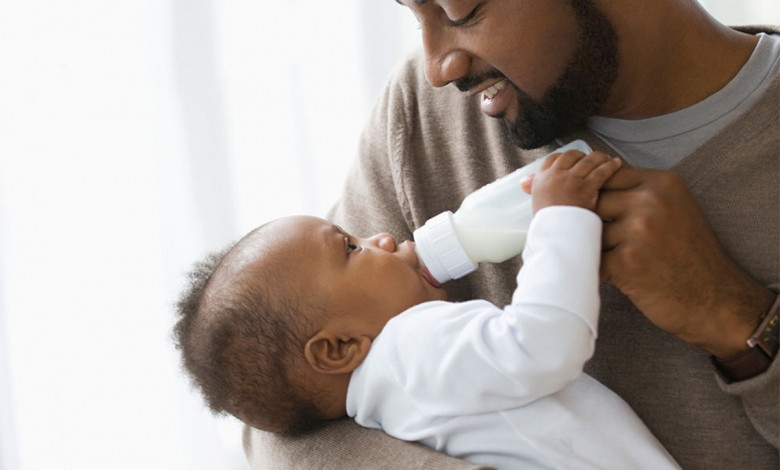
When a new baby arrives, dads want to participate in the care of their little one just as much as mom, but when it comes to feeding, many dads admit to feeling useless or irrelevant. Just because mom is breastfeeding doesn't mean dads can't get in on the action. Bottle feeding is a great way for the other parent to bond with baby and gain confidence in raising this tiny human. Here are some quick tips and tricks for making the most of your bottle-feeding time with baby.
If mom is planning to breastfeed, it’s best to wait a bit to start bottle feeding. Once mom’s milk supply is established, baby is latching and feeding well, dad can start bottle feeding baby. This usually takes a few days, but it’s worth the wait. Breastmilk can be pumped and stored in breastmilk storage bags in the fridge for up to one week or freezer for up to six months. When preparing stored breastmilk for use, frozen breastmilk can be thawed overnight in the fridge, or by placing the bag under warm running water. Gradual warming is key, since warming breastmilk too quickly can destroy important nutrients.
Whether you will be using breastmilk exclusively or supplementing with formula, there are a few important things to consider each time you prepare a bottle – wash the bottle, parts, and your hands before mixing. If using formula, be sure to follow the manufacturer’s instructions for mixing guidelines but make sure to measure precisely, as too much powder can cause an upset stomach for baby. Mix thoroughly, ensuring there are no clumps that can get stuck in the nipple.
When it comes to warming the bottle, you may be one of the lucky few parents whose baby will take a bottle straight out of the fridge. For many dads, though, you’ll need to warm up the bottle. There are a wide range of ways you can do that, but sticking it in the microwave is not one of them. If you are warming it on the stove, place a pot of water on the stove and let the water warm, not boil. This takes the longest but it costs just about nothing. Another option is placing the bottle under the faucet. Hold the bottle under warm-to-hot running water and rotating it around for a few minutes. By far the fastest method, bottle warmers are great at getting the milk to that ideal temperature quickly. Whichever method you use, be sure to swirl the bottle a bit to help prevent hot spots. Also, put a few drops on your wrist to ensure it’s not too hot before giving it to baby.
When it comes to feeding positions and techniques, there are several popular ones. You may have to try a few before deciding which works best for you and your baby. The cradle hold, or football hold, is one of the more traditional positions. It helps prevent ear infections, allows you to see baby’s face better to read their cues, and is great for bonding time since lots of eye contact is possible. Place baby’s head in the crook of your arm and wrap your hand around his bottom. Lift your elbow, so that baby is at a slight angle, with their head higher than their body. Switch sides when your arm gets tired, because it will.
Click here to read more at The Nassau Guardian





